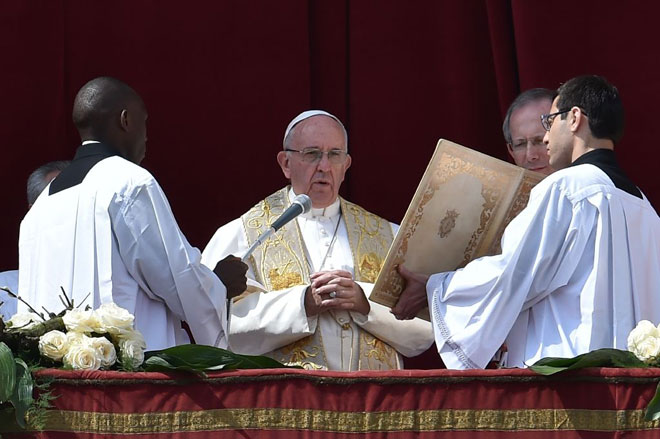
Paris, France | AFP |
Protestants form a branch of the Christian faith that broke away from the Roman Catholic Church during the Reformation 500 years ago.
Pope Francis has nonetheless strengthened ties with several Protestant denominations, and his trip to Sweden to take part in events marking the anniversary of the Reformation could mark a new high in relations.
Here are some key points about Protestantism:
October 31, 1517
This is the date that marks the beginning of the Reformation, when German theologian Martin Luther published his “95 Theses”.
These notably criticised how the Catholic concept of “indulgences” — whereby a repentant sinner could reduce the punishment for his sins in purgatory in return for a monetary contribution — had been corrupted into a lucrative cash-for-salvation scheme.
Luther was excommunicated — expelled from the Roman Catholic Church — on January 3, 1521. But his message spread quickly across Europe, disseminated by the printing press.
Articles of faith
There are several theological differences between Protestants and Roman Catholics, including the following:
– Protestants believe the Bible alone is the highest authority in matters of faith. Catholics acknowledge the combined authority of the Bible along with the traditions of the Church.
– For Protestants, salvation is through faith alone, while Catholic doctrine says “good works” can influence one’s standing with God.
– There are also doctrinal differences over the bread and wine used in the eucharist or holy communion. For the Catholic Church, the bread and wine mystically transform into the actual body and blood of Jesus, while for Protestants, they remain a symbol of his sacrificial death on the cross.
Three branches
The Protestant movement diversified into three main branches: Lutheranism, Calvinism — which includes the Reformed Church and Presbyterianism — and Anglicanism.
The Church of Sweden, which will host the pope, is Lutheran and adheres closely to principles established by Luther.
Other sizeable Lutheran congregations are located in neighbouring Scandinavian countries, as well as in Germany, Ethiopia, Indonesia, Tanzania and the United States.
Calvinists are inspired by French theologian John Calvin, who in 1536 founded the Reformed Church in Geneva. This is present primarily in Europe, North America, South Africa and Australia.
The Anglican Communion can be found on almost all continents, and adherents observe rites common to both the Catholic and Reformed denominations.
The Catholic Church reserves the priesthood for men, who must remain celibate; within Protestantism, clerics can marry and have children, and in many churches, women have been admitted to the priesthood and hierarchy.
Multiple offshoots
In addition to its major branches, the Protestant church comprises many denominations that number tens of millions of members. They include Baptists, Evangelicals, Methodists and a group of more than a half-dozen churches based in Africa.
Other common denominations include Congregationalists, Seventh Day Adventists, Quakers, Unitarians and Mennonites such as the US-based Amish people that renounce modern technology.
Non-denominational, evangelical and charismatic or pentecostal churches are currently among those growing the fastest.
800 million faithful
The precise number of Protestants is difficult to establish given the number of churches and offshoots.
The independent Pew Research Center has estimated that in 2011, Protestants numbered more than 800 million, “broadly defined to include Anglicans as well as members of independent and non-denominational churches.”
 The Independent Uganda: You get the Truth we Pay the Price
The Independent Uganda: You get the Truth we Pay the Price



